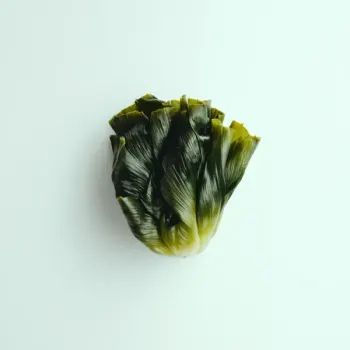Nori and Kombu are types of seaweed essential to Japanese cuisine, with Nori used in sushi rolls and as a garnish, and Kombu used in dashi stock and to impart umami to dishes. They differ in taste, texture, and culinary uses.

Nori is a dried, paper-like seaweed commonly used in sushi rolls and as a garnish or flavoring in various Japanese dishes. It's often recognized for its dark green, almost black color and its crisp texture.

Kombu is a type of kelp that is typically sold dried or pickled. It's known for its role in making dashi (a foundational Japanese stock) and for its thick, leathery texture that softens when cooked.
Nori and Kombu differ significantly in texture, flavor, and culinary applications. Nori is thin and crispy with a delicate, briny taste, while Kombu is thicker, chewier, and has a deep umami flavor. Nori is often enjoyed as is, whereas Kombu is usually cooked to extract its flavors.

Your ultimate Recipe Box, Meal Planner, and Cooking Class all in one
Nori is the classic wrapping for sushi rolls (maki) and onigiri (rice balls), providing a crisp contrast to the soft rice and fillings. Nori's mild taste complements the delicate flavors of sushi ingredients. Kombu isn't typically used in the assembly of sushi but is essential in preparing sushi rice. It's simmered with rice vinegar, sugar, and salt to create seasoned rice that's subtly infused with umami.
Nori can be sliced into thin strips and added to miso soup or other broths as a garnish, adding a quick burst of ocean flavor without overpowering the dish. Kombu is the backbone of many Japanese broths, including the essential dashi, where it's simmered to release its rich umami character that acts as a flavor foundation for soups.
Crumbled or shredded Nori can be sprinkled over rice and grain bowls to add a touch of color and a burst of savory, sea-salted flavor that complements vegetables and fish. A piece of Kombu can be placed in the pot while cooking rice or grains to subtly perfume them with its umami essence, enhancing the overall taste without dominating the dish.
Ground into a fine powder, Nori is a key ingredient in Furikake, a Japanese seasoning blend sprinkled over rice, vegetables, and fish for an extra dimension of flavor. Kombu can be dried and powdered to make Kombu-cha (not to be confused with the fermented tea Kombucha), a savory tea or seasoning powder that enhances the umami in dressings and marinades.
Both Nori and Kombu are low in calories and rich in vitamins and minerals, especially iodine. Nori contains higher amounts of vitamin C, while Kombu is known for its high glutamic acid content, which contributes to its umami flavor.
| Nutrient | Nori ( per 10g ) | Kombu ( per 10g ) |
|---|---|---|
| Fat | 0.1g | 0.1g |
| Fiber | 3.3g | 0.5g |
| Iodine | 1.2mg | 2.4mg |
| Protein | 3g | 0.5g |
| Calories | 33 | 5 |
| Carbohydrates | 3.3g | 1.2g |
Nori doesn't have the same depth of flavor as Kombu and won't yield the same results in dashi. For authentic dashi, it's best to use Kombu.
Yes, Nori has a milder, slightly sweet flavor, whereas Kombu has a stronger, more pronounced umami taste.
Kombu is typically not eaten raw as it is tough and chewy; it's usually cooked or pickled to become edible.
They are not directly interchangeable due to their different textures and flavors, but both can contribute a marine element to a dish when used appropriately.
Both should be stored in a cool, dry place away from light. Nori should be kept airtight to maintain its crispness, while Kombu can be kept in a breathable container.